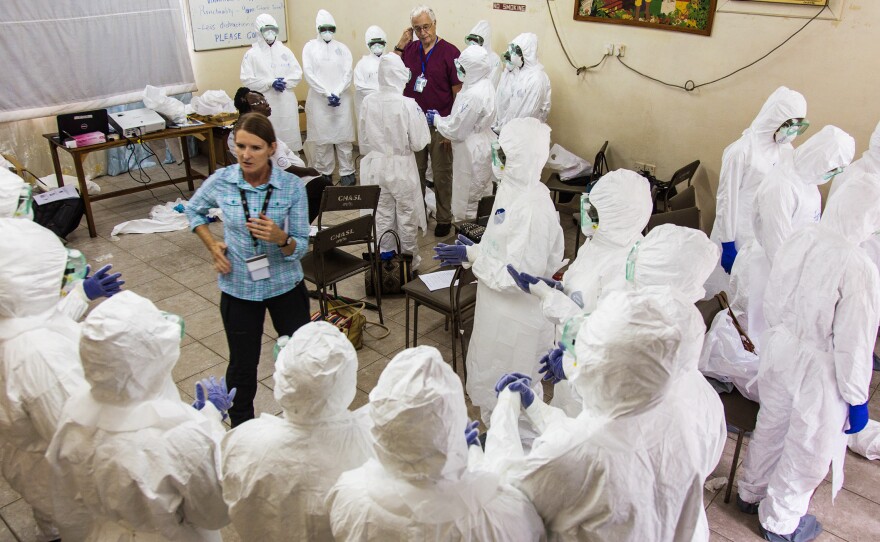As health officials in the Democratic Republic of Congo begin rolling out an Ebola vaccination campaign, researchers in La Jolla are studying samples from survivors of the last Ebola outbreak four years ago. They are seeking broader vaccines and treatments that would also work on other strains of the highly contagious disease.
“The worry is that there are actually four other viruses in that genus and even more in the larger family. We don’t know which one will break out next,” said Erica Ollmann Saphire, a professor at Scripps Research Institute and director of a consortium of some of the world’s top Ebola researchers.
The viruses all share similar deadly symptoms to Ebola, Ollman Saphire explained.
“We have a vaccine against one, but not the others. And so what we’re trying to do here is to figure out which parts of these viruses are all the same.”
Studying the antibodies an Ebola survivor made in response to their infection is key in treating new infections, she said.
Her team of researchers, dressed in gloves and lab coats, are mapping the virus’s molecules. Ollmann Saphire explained, if you know how they are built, you can figure out how to defeat them.
“What we’re doing here in San Diego is looking at the molecular nature of the virus,” she said. “We take pictures of its key molecules to understand where it’s vulnerable and where we might target a therapy or target a vaccine.”
She related it to looking at military intelligence photos.
“So when our military intelligence has photos that tell us what chair and what room and what house to target because that’s where the bad guy is sitting, that’s what we’re trying to do with this virus,” she said. “Figure out exactly where we want to hit it with a vaccine or a therapeutic, and where the virus can never change, it can never mutate to escape a therapy.”

Ollmann Saphire emphasized that a vaccine is a substance given before exposure to stimulate antibodies and provide immunity. A therapeutic is a drug or treatment given to someone who is already infected with the virus.
She wasn't surprised by the latest Ebola outbreak because the virus circulates frequently and quietly, she said. There’s also evidence of many people being exposed to Ebola but not getting sick, she added.
“So we need to track these people now to figure out where the virus is, how they’re getting exposed, how these people are not getting sick — is there something particular about their immune system or their exposure?” she said. “And we need to understand more about the biology of this virus so that we can prevent an outbreak instead of always trying to put out a fire.”
Between 2014 and 2016, the Ebola virus claimed more than 11,000 lives in West Africa. Since then, a vaccine has been developed to prevent the spread of the virus, but there is no licensed treatment.
Ollmann Saphire said she’s hopeful the Congo outbreak will be knocked down quickly with the vaccine, but there are still concerns.
“The danger is that new cases have emerged in a city of a million people,” she said. “And that city of a million is connected to two capital cities — one of 3 million, one of 12 million.”
There’s also evidence of other potential Ebola-related viruses out there,” she warned.
“It’s not only Africa. There’s an Asian Ebola virus called Reston Ebola virus, she said. “And it is highly lethal to monkeys. It is not yet known to make humans sick, but we don’t know why."
For Ollmann Saphire and her team, the Congo outbreak and the potential of other deadly related viral outbreaks have brought a renewed urgency to find a cure.







